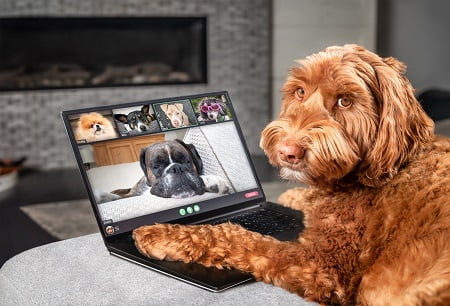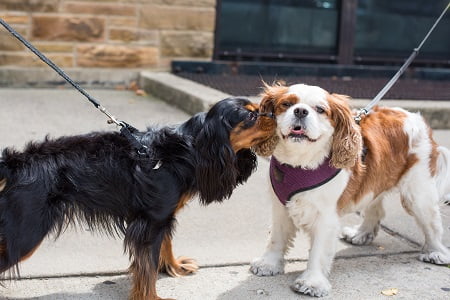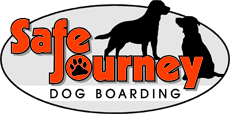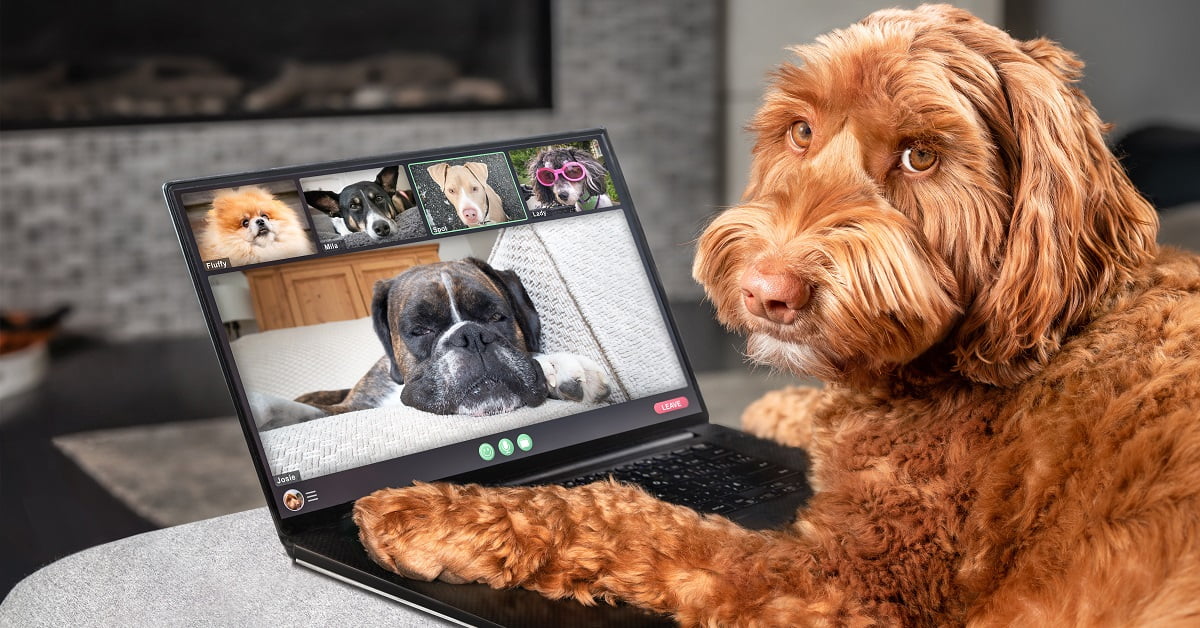Any dog-lover knows what it’s like to consider a new addition to their family. But the thought of a new pooch when browsing shelters and puppy catalogues is irresistible. How could it not be? The dough faced smile of a dog delights and infects a great deal many people. Even a good deal of self-described cat people. While the choice may be easy for the human to welcome Dido, it’s a task not to be taken lightly if your home already has its own Fido.
Dogs are territorial animals and their home becomes their den, which makes it harder to introduce a new dog at all. Not all dogs are social animals, but if your doggo falls in easy with other canines then it’s a simple matter of following the right steps. Safe Journey Dog Boarding compiled a step-by-step process from the most trusted canine resources on the internet to help you make proper introductions. Avoid common mistakes while introducing your old faithful to your new love. The best part is, you do not have to be a canine behaviorist to do it!
Meet In a Neutral Location
Before taking your new dog to meet the family at home, it’s best to introduce them in a neutral location. Take both of them to a location where either animal does not feel familiar or on home turf. Otherwise, the resident might not respond well to the new arrival. Neutral territory gives them both an even playing ground where they can sniff each other out, make first impressions and have their first positive interaction. Make sure you have one person per leash.
Do not take them to a dog park; the goal is for them to meet each other, not the neighborhood.
Know Your Dogs’ Body Language
 There are certainbody language signs that every dog owner should know when it comes to the introduction process. Do not be scared if either mutt is dragging you on the leash while sniffing each other. Do not be worried if one gives a cursory growl; growls signify “I don’t like that” in a respectful way. Adult dogs will do this all the time for a pup’s developing social skills.
There are certainbody language signs that every dog owner should know when it comes to the introduction process. Do not be scared if either mutt is dragging you on the leash while sniffing each other. Do not be worried if one gives a cursory growl; growls signify “I don’t like that” in a respectful way. Adult dogs will do this all the time for a pup’s developing social skills.
Signs to worry about include raised lips, bared teeth, a tall wagging from side to side and a low posture. It’s a position that not only threatens barks and snarls, but also indicates that the dog is ready to pounce. At this point, meeting time is over, but it does not mean the dogs are incompatible. Maybe one dance partner simply became too comfortable too fast and the more reserved other felt it was threatened. Either way, take note and see what happens on the walk.
If your dog goes low, with their elbows on the ground, tail up in the air and tongue dangling from their mouth, they are ready to play. This positive behavior indicates the universal play language for any dog and should be encouraging for the rest of the day. It should not warrant taking them off leash in the park or to stop following the process.
Go For a Walk Around the Neighborhood
After the bow-wows have a cursory meeting, it’s time for them to engage in a simple group project; learning how to go on a walk with each other. Start by having one in front of the other, about half a block ahead. Take turns swapping positions by going to the other side of the street and waiting. This will allow each dog to sniff each other’s passing scent and discourage territorial behavior.
Once that’s been done for about several blocks, try walking side-by-side. When one urinates, let the other sniff before cleaning up. This process is called elimination. Dogs need it to scout out any and all scents to grow comfortable with each other. When the walk is done, they will have completed their first group project together and it’s time to see how they play.
Take Turns For Play and Mealtime
You can take the dogs back home to the yard. No toys should be involved during the first playtime. Any and all toys, food bowls and beds should be hidden whether at home or at the park. Do not give your dogs reasons to fight with each other.
If you take them home, let one come in after the other. No need to jostle both at the same time, let the new dog in first and let resident dog in next. This affords the resident to understand that the house is home for both of them and they must share it. Let them first work it out in yard. Take them off leash and monitor them carefully. If one no longer wishes to play, time to separate them before the other starts learning bully behavior.
When it comes to mealtime, make sure to monitor food and have them eat far from each other or one at a time. Once one finishes, take the bowl away and give a fresh bowl to the other. If one tries to play sneaky Pete and steal some kibble, it’s time to separate the feeding areas.
Give Each Dog Their Own Bed
 Each dog should have their own bed. It’s not a disaster if they must be sent to their respective crates. The goal is to have them recognize their particular space for relaxing during the day and sleeping during the night. Do not let one dog on the bed and keep another on the bed. This will only encourage bully behavior.
Each dog should have their own bed. It’s not a disaster if they must be sent to their respective crates. The goal is to have them recognize their particular space for relaxing during the day and sleeping during the night. Do not let one dog on the bed and keep another on the bed. This will only encourage bully behavior.
Separate While You Are Away
When you go to work, keep your dogs in separate sections of the house to reduce unsupervised interactions. No need to confine either to one room each, just give each a set of rooms in which to roam and play while keeping a tall baby gate between the two. This means if they do want to interact with each other they can, but no one will become jealous of the other’s toys or food bowl. Make sure you have someone able to let them out for restroom breaks if possible. If your resident or new dog begins body blocking to prevent one-on-one time, then it is time to separate.
Safe Journey Cares For Dogs New and Old
Here at Safe Journey Dog Boarding, we know introducing dogs to each other requires time and supervision. Even without a dog already established at the house, it takes some months for a puppy or rescue to acclimate to their new environment. They need that time to explore the space and make it their own. If you need someone to look after Fido and Dido while you are gone for work or other extended periods of time, we can care for the dogs with our professional, amiable staff. Contact us today!

